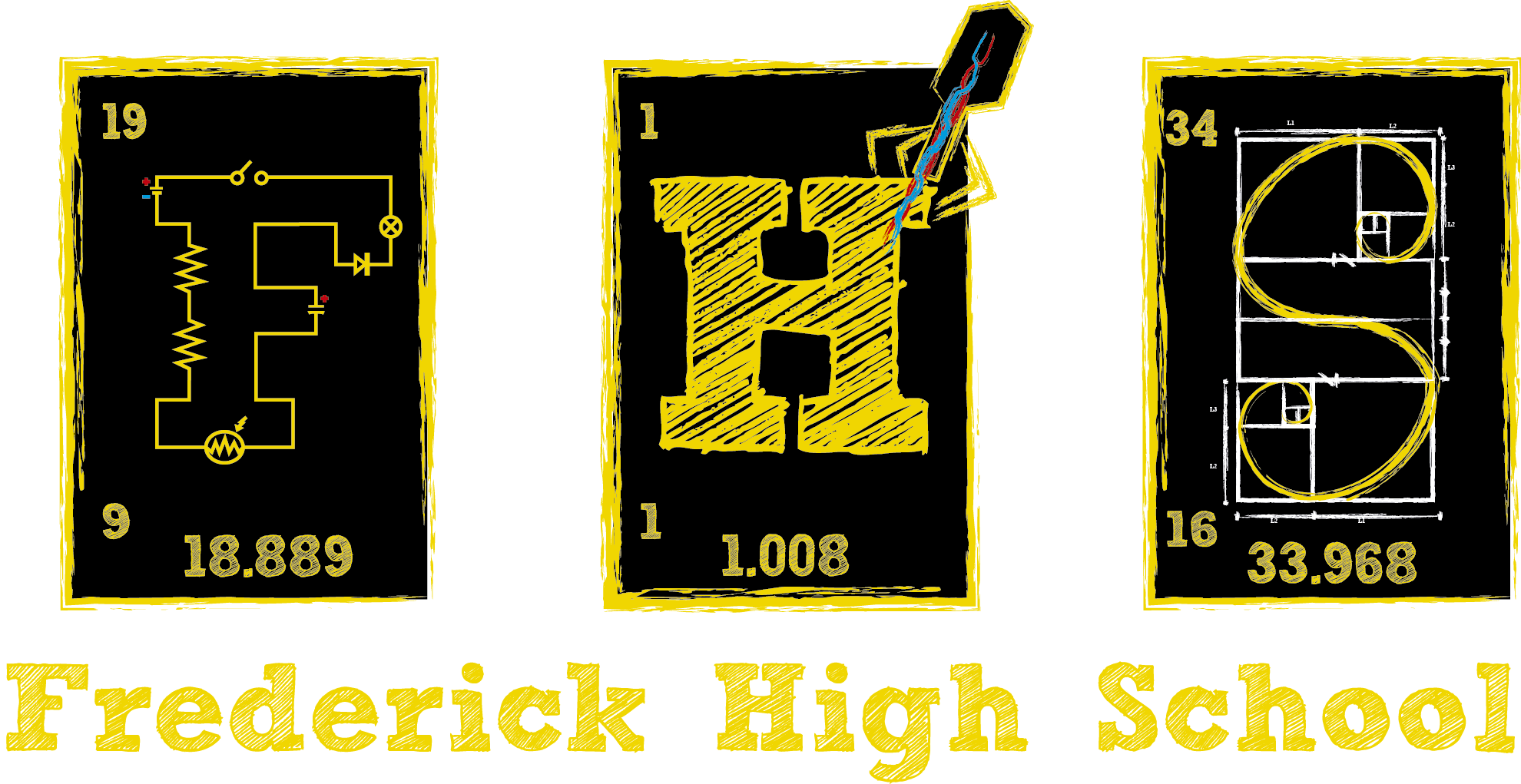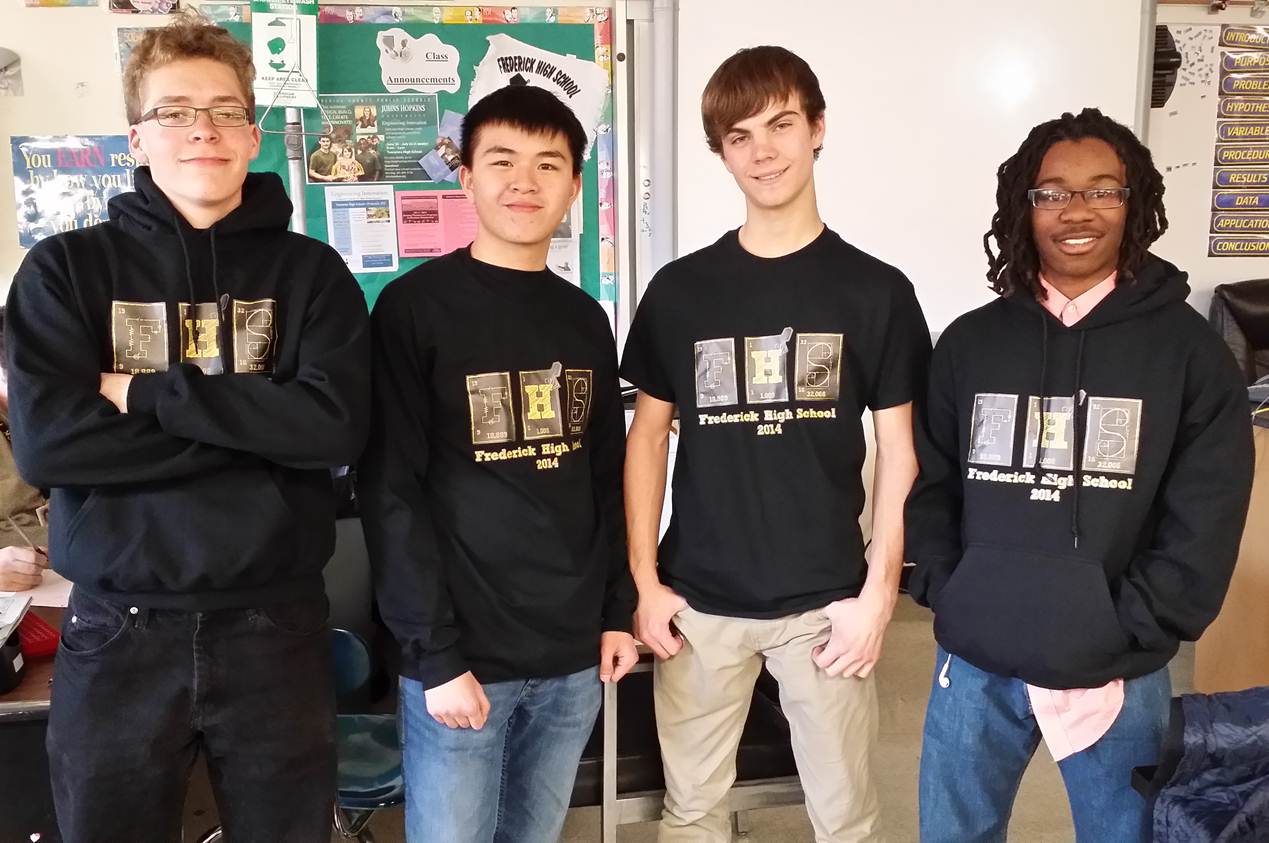|
|
| (7 intermediate revisions not shown) |
| Line 1: |
Line 1: |
| | {{:Team:FHS_Frederick_MD/Header}} | | {{:Team:FHS_Frederick_MD/Header}} |
| - | | + | =Overview= |
| - | <!-- *** What falls between these lines is the Alert Box! You can remove it from your pages once you have read and understood the alert ***
| + | |
| - | | + | |
| - | <html>
| + | |
| - | <div id="box" style="width: 700px; margin-left: 137px; padding: 5px; border: 3px solid #fe2b33; /*background-color: #fe2b33;*/">
| + | |
| - | <div id="template" style="text-align: center; font-weight: bold; font-size: large; /*color: #f6f6f6*/; padding: 5px;">
| + | |
| - | This is a template page. READ THESE INSTRUCTIONS.
| + | |
| - | </div>
| + | |
| - | <div id="instructions" style="text-align: center; font-weight: normal; font-size: small; /*color: #f6f6f6*/; padding: 5px;">
| + | |
| - | You are provided with this team page template with which to start the iGEM season. You may choose to personalize it to fit your team but keep the same "look." Or you may choose to take your team wiki to a different level and design your own wiki. You can find some examples <a href="https://2009.igem.org/Help:Template/Examples">HERE</a>.
| + | |
| - | </div>
| + | |
| - | <div id="warning" style="/*text-align: center;*/ font-weight: bold; font-size: small; /*color: #f6f6f6*/; padding: 5px;">
| + | |
| - | You <strong>MUST</strong> have the following information on your wiki:
| + | |
| - | <ul style="font-weight:normal;">
| + | |
| - | <li>a team description</li>
| + | |
| - | <li>project description</li>
| + | |
| - | <li>safety information (did your team take a safety training course? were you supervised in the lab?)</li>
| + | |
| - | <li>team attribution (who did what part of your project?)</li>
| + | |
| - | </ul>
| + | |
| - | You may also wish to add other page such as:
| + | |
| - | <ul style="font-weight:normal;">
| + | |
| - | <li>lab notebook</li>
| + | |
| - | <li>sponsor information</li>
| + | |
| - | <li>other information</li>
| + | |
| - | </ul>
| + | |
| - | REMEMBER, keep all of your pages within your teams namespace. <br><span style="font-weight:normal; font-style:italic;">Example: 2013hs.igem.org/Team:FHS_Frederick_MD/Our_Pets</span>
| + | |
| - | </div>
| + | |
| - | </div>
| + | |
| - | </html>
| + | |
| - | | + | |
| - | *********************** End of the alert box *********************** -->
| + | |
| - | | + | |
| - | | + | |
| - | ===Team===
| + | |
| | [[File:Tshirts.jpg|right|500px]] | | [[File:Tshirts.jpg|right|500px]] |
| - | We are interested in creating a microbial fuel cell that utilizes anaerobic bacteria to produce electricity. In order to optimize the growth conditions in the fuel cell, a fluorescent protein marker will be added so to visualize bacterial growth. We plan to implement an oxygen-sensitive promoter to induce expression of the glowing gene. This should ensure that bacteria only grow under anaerobic conditions. This would lead to the creation of a genetic construct that can be deposited back into the “toolbox” parts repository for iGEM. | + | We are interested in creating a [[Team:FHS_Frederick_MD/Microbial_Fuel_Cells|microbial fuel cell]] that utilizes the facultative anaerobic bacteria, ''Shewanella oneidensis'', to produce [[Team:FHS_Frederick_MD/Renewable_Energy|renewable energy]] and [[Team:FHS_Frederick_MD/Clean_Water|clean water]]. |
| - | | + | |
| - | ===Goals===
| + | |
| - | | + | |
| - | ===Gene Design===
| + | |
| - | (Kyle and Jonathon, briefly summarize how NirB and LOV work together.)
| + | |
| - | | + | |
| - | ====LOV Domain====
| + | |
| - | (Jonathon, this is your area to describe how we engineered the LOV gene.)
| + | |
| - | | + | |
| - | See [[Team:FHS_Frederick_MD/LOV_Domain|LOV Domain]] for a more detailed description of how we constructed the gene.
| + | |
| - | | + | |
| - | LOV stands for light oxygen voltage. It is a sensor protein that detects the presence of blue light(365nm). In its wild type form it is used by higher plants, fungi, and bacteria. In higher plants LOV controls phototropism and chloroplasts relocation. In this form it absorbs blue light(365nm) and in the wild state flavin mononuclotides(FMN) link to cysteine. This results in LOV not being able to emit green light(495nm) due to FMN.
| + | |
| - | We choose to modify LOV as are anaerobic environment and growth indicator. We choose love over green fluorescent protiens(GFP) due to the fact that GFPs are completely depend on molecular oxygen to glow. However due to FMN LOV can not release green light(495nm). Thomas Drepper found a solution to this problem
| + | |
| - | Drepper and his fellow researchers realized the effects of FMN and found away to remove it. By eliminating the cysteine amino acid FMN had nothing to bind to. Following Dreppers model we removed the cysteine amino acid from bacillus subtilis.
| + | |
| - | | + | |
| - | | + | |
| - | | + | |
| - | To create the LOV strand, we initially created cultures of ''E.coli'' containing the plasmid pBB1MCS2. We chose this plasmid due to its ability to transform a wide range of bacteria, including our desired host bacterial strain of ''Schwenella odeneidensis'' for the LOV gene. We grew it in kanamycin-rich plates to eliminate all possible bacterial colonies lacking pBB1MCS2. Using the Quia prep spin mini prepkit, we extracted the plasmid from the ''E.coli'' bacteria. We tested the purity of the uncut plasmid through electrophoresis.
| + | |
| - | | + | |
| - | We then grew cultures of ''Bacillus subtilis'' that contained the desired LOV domian. Extraction of the genomic DNA from ''B.subtilis'' was accomplished through a boil prep procedure.
| + | |
| - | | + | |
| - | We then digested LOV and NirB into two separate preps containing the plasmid pB1C3 already treated with EcoRI and PstI,which originated from the iGEM 3A assembly kit.
| + | |
| - | | + | |
| - | Ligation of the two digests of NirB and LOV were completed fusing them to the plasmid pB1C3. Using these new plasmids, we then commenced on transformation of the LyoComp cells. However the transformation efficiency was very low.. After two failed transformations, we decided to create our own chemically competent cells,thus created ''E.coli'' NE1U beta cells. We then performed another digestion, as well as ligation, with LOV and NirB. We completed another transformation using ''E.coli'' NE1U Beta bacteria with the prepared plasmids. Following the incubation period, we saw growth on all plates cultured,with the exception of the negative control. Thus we can conclude that we extracted the two plasmids using the mini prep kit and successfully transformed those plasmids into the bacteria to show expression.
| + | |
| - | | + | |
| - | ===Methods===
| + | |
| - | | + | |
| - | (This is Dillon's domain.)
| + | |
| - | | + | |
| - | ====3A Assembly====
| + | |
| - | | + | |
| - | We used the 3A, or 3 antibody, assembly kit in order to transform E.coli with two genes, the LOV gene and the NirB gene. These genes will allow for further work with Schwenella bacteria in the anaerobic microbial fuel cell. We then used the mini-prep components of the kit to purify our plasmid. We verified the plasmid's presence through electrophoresis and further sequence analysis.
| + | |
| | | | |
| - | ===Results/Conclusions===
| + | In order to optimize the growth conditions in the anaerobic chamber of the fuel cell, a fluorescent protein marker will be added so to visualize bacterial growth under different conditions. |
| - | What did you achieve over the course of your semester?
| + | |
| | | | |
| | + | We plan to accomplish this using the [[Team:FHS_Frederick_MD/NirB_Promoter|NirB oxygen-sensitive promoter]] to induce expression of the glowing gene only when oxygen is scarce. Furthermore, we must engineer a fluorescent [[Team:FHS_Frederick_MD/LOV_Domain|LOV domain]], which is optimized for expression in ''S. oneidensis'' and capable of fluorescence under anaerobic conditions. |
| | | | |
| - | ===Sponsors===
| + | This genetic construct will help us ensure that the bacteria are actually growing under anaerobic conditions. This would lead to the creation of a BioBrick that can be deposited back into the “toolbox” parts repository for future iGEM teams. |
| - | {| cellpadding="20"
| + | {{:Team:FHS_Frederick_MD/Footer}} |
| - | |width="30%"| [[File:NEB_Logo.jpg|link=http://neb.com|175px]]
| + | |
| - | |width="30%"| [[File:BNBL_Logo.jpg|link=http://bnbi.org|175px]]
| + | |
| - | |width="30%"| [[File:ABT_Logo.jpg|link=http://arsbiotechnica.org|175px]]
| + | |
| - | |-
| + | |
| - | |style="vertical-align:top;"| [http://neb.org New England Biolabs] provided our team with many of the enzymes and reagents we needed to for this project.
| + | |
| - | |style="vertical-align:top;"| [http://bnbi.org The Battelle National Biodefense Institute] helped cover our iGEM registration costs.
| + | |
| - | |style="vertical-align:top;"| [http://arsbiotechnica.org Ars Biotechnica] is a nonprofit profit organization established by our mentors to help Frederick and other high schools build and maintain synthetic biology labs.
| + | |
| - | |}
| + | |
Overview
We are interested in creating a microbial fuel cell that utilizes the facultative anaerobic bacteria, Shewanella oneidensis, to produce renewable energy and clean water.
In order to optimize the growth conditions in the anaerobic chamber of the fuel cell, a fluorescent protein marker will be added so to visualize bacterial growth under different conditions.
We plan to accomplish this using the NirB oxygen-sensitive promoter to induce expression of the glowing gene only when oxygen is scarce. Furthermore, we must engineer a fluorescent LOV domain, which is optimized for expression in S. oneidensis and capable of fluorescence under anaerobic conditions.
This genetic construct will help us ensure that the bacteria are actually growing under anaerobic conditions. This would lead to the creation of a BioBrick that can be deposited back into the “toolbox” parts repository for future iGEM teams.
Return to the iGEM 2014 HS Main Page
 "
"


